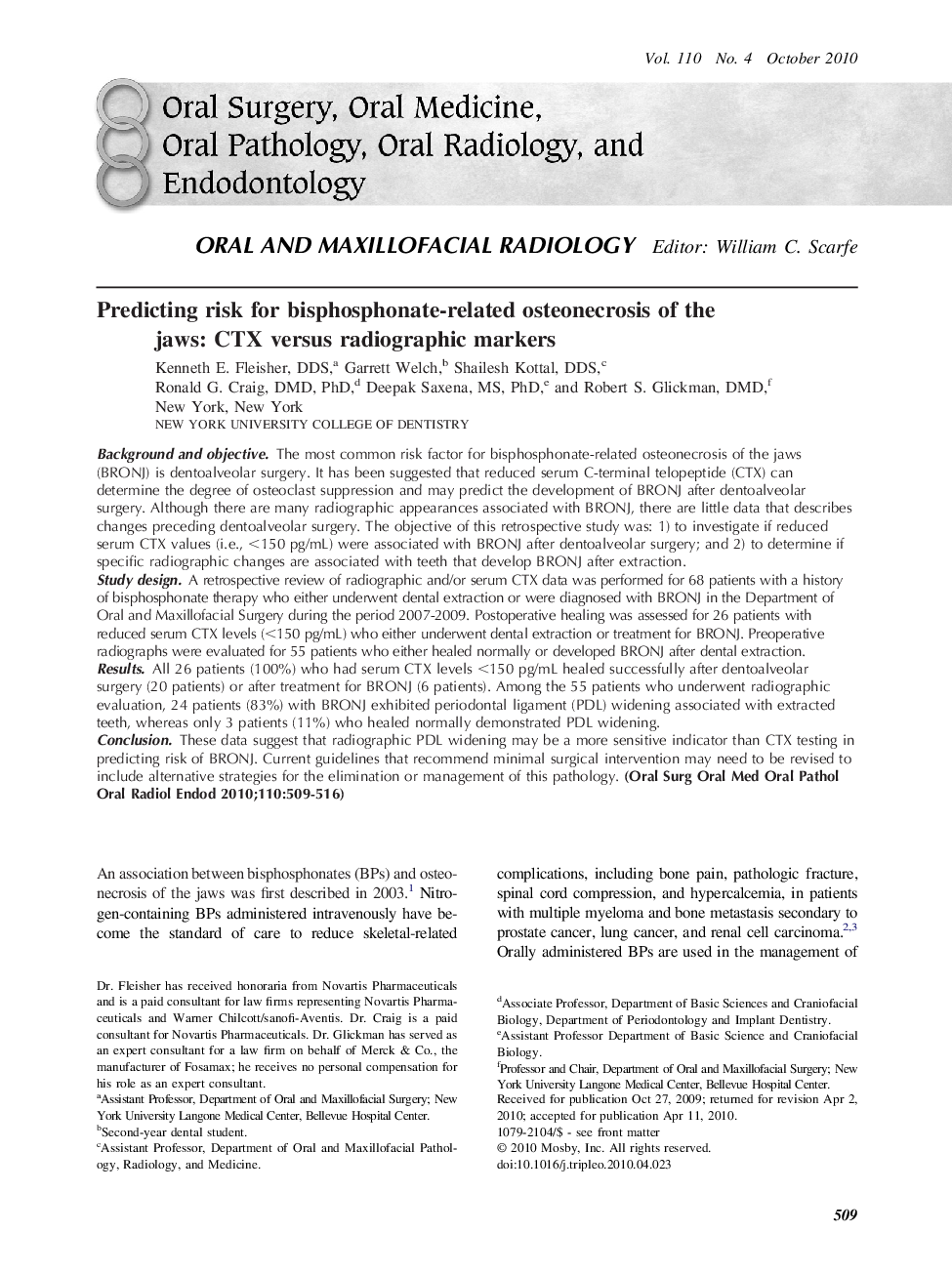| Article ID | Journal | Published Year | Pages | File Type |
|---|---|---|---|---|
| 3167323 | Oral Surgery, Oral Medicine, Oral Pathology, Oral Radiology, and Endodontology | 2010 | 8 Pages |
Background and objectiveThe most common risk factor for bisphosphonate-related osteonecrosis of the jaws (BRONJ) is dentoalveolar surgery. It has been suggested that reduced serum C-terminal telopeptide (CTX) can determine the degree of osteoclast suppression and may predict the development of BRONJ after dentoalveolar surgery. Although there are many radiographic appearances associated with BRONJ, there are little data that describes changes preceding dentoalveolar surgery. The objective of this retrospective study was: 1) to investigate if reduced serum CTX values (i.e., <150 pg/mL) were associated with BRONJ after dentoalveolar surgery; and 2) to determine if specific radiographic changes are associated with teeth that develop BRONJ after extraction.Study designA retrospective review of radiographic and/or serum CTX data was performed for 68 patients with a history of bisphosphonate therapy who either underwent dental extraction or were diagnosed with BRONJ in the Department of Oral and Maxillofacial Surgery during the period 2007-2009. Postoperative healing was assessed for 26 patients with reduced serum CTX levels (<150 pg/mL) who either underwent dental extraction or treatment for BRONJ. Preoperative radiographs were evaluated for 55 patients who either healed normally or developed BRONJ after dental extraction.ResultsAll 26 patients (100%) who had serum CTX levels <150 pg/mL healed successfully after dentoalveolar surgery (20 patients) or after treatment for BRONJ (6 patients). Among the 55 patients who underwent radiographic evaluation, 24 patients (83%) with BRONJ exhibited periodontal ligament (PDL) widening associated with extracted teeth, whereas only 3 patients (11%) who healed normally demonstrated PDL widening.ConclusionThese data suggest that radiographic PDL widening may be a more sensitive indicator than CTX testing in predicting risk of BRONJ. Current guidelines that recommend minimal surgical intervention may need to be revised to include alternative strategies for the elimination or management of this pathology.
